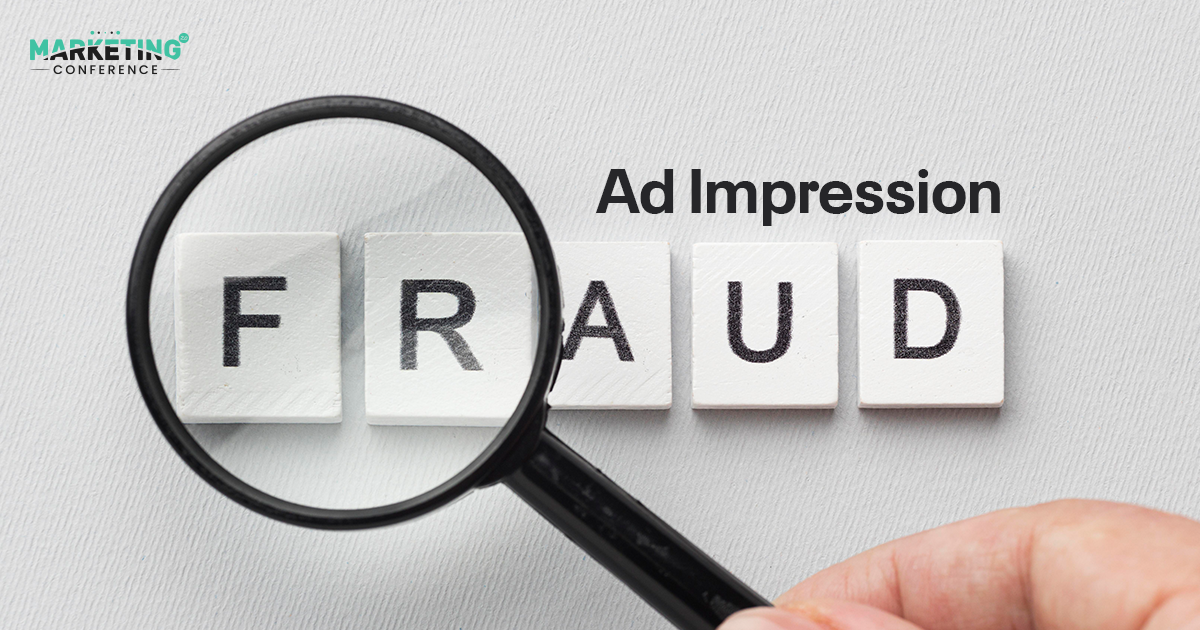
As the digital advertising landscape catapults forward, its intricacies become even more entwined, especially in the arena of marketing events. Beyond just reaching a vast audience, the core strength of digital ads lies in the authentic measurement of interactions and impressions.
However, with such groundbreaking opportunities come lurking vulnerabilities. Foremost among these is 'Ad Impression Fraud.' This deceptive challenge casts a mirage of unparalleled visibility. But, contrary to the floating numbers, a vast course of ads become victims, never genuinely reaching the intended eyes. Venture with the Marketing 2.0 Conference into this deceptive world of ad trickery and arm yourself with strategies to counteract this illusion of high visibility.
Let’s dive in!
Understanding Ad Impression Fraud
Imagine logging into an analytics dashboard and finding record-breaking views on your ads. Fantastic, right? Not always. Some of those views might be an illusion, thanks to 'Ad Impression Fraud.'
At the heart of digital advertising, there's a battle between genuine metrics and manipulated numbers. Ad impression fraud is the nefarious act of artificially inflating the number of views or impressions an ad receives, tricking advertisers into believing their campaign is more successful than it truly is. Experts at the Marketing 2.0 Conference have dived deep into the matter to provide a comprehensive review of the growing issue of advertising scams.
Why Does It Matter?
Fake impressions lead to wasted ad budgets. You might be paying for a 'view' that's actually just a bot or an unseen load on a web page. Attending conferences for marketing professionals, such as the Marketing 2.0 Conference, often highlights these industry pitfalls. Experts discuss and dissect ways to detect and counter such fraudulent activities. Knowing about ad impression fraud empowers marketers to make informed decisions, ensuring that every penny spent genuinely counts.
Decoding The Dark Arts Of Ad Impression Fraud
Understanding the underpinnings of ad impression fraud is crucial for any digital marketer. At its core, this type of fraud creates the illusion that a digital ad is being viewed by countless legitimate users when, in reality, it's being "seen" by bots or through concealed web pages. Below mentioned are some common types of ad impression fraud highlighted at global marketing events like the Marketing 2.0 Conference-
- Hidden Layers
Some deceitful publishers stack multiple ads in a single ad slot. To the advertiser, it looks like their ad received an impression when it's actually invisible to users.
- Bots And Fake Traffic
Sophisticated bots mimic human behavior, tricking analytics into counting false impressions. Imagine organizing a huge marketing event, expecting a large audience, but most attendees are just mannequins!
- Pixel Stuffing
This involves shrinking an ad to a 1x1 pixel size, making it nearly invisible, yet still counting as an impression.
- Domain Spoofing
Fraudsters misrepresent low-quality websites as premium ones, drawing advertisers to buy space on sites that hold little to no value.
By familiarizing ourselves with these tactics, marketers can stay one step ahead, ensuring genuine visibility and authentic engagement.

The Impact On The Industry
In the digital arena, not everything is as it seems. Picture this: an enchanted forest where shadows play tricks, making trees seem endless and the path deceptive. Welcome to the world of ad impression fraud, where illusion reigns supreme. Ad impression fraud doesn't just hurt advertisers. The entire digital advertising ecosystem takes a hit. Here's why:
- Wasted Budgets
Brands end up paying for impressions that don't exist. This not only wastes their money but also skews analytics and campaign effectiveness data.
- Eroding Trust
As brands continue to fall prey to impression fraud, trust in the digital advertising ecosystem diminishes. Advertisers become wary, questioning every metric and every partner.
- Misguided Strategies
Based on inflated impressions, brands might mistakenly think a campaign or platform is more effective than it truly is, leading them to make ill-advised marketing decisions.
Countering The Illusion: Unveiling Ad Impression Fraud
Navigating the landscape of digital advertising, the race for heightened visibility frequently conjures a misleading facade. While marketers endeavor to captivate audiences, the dire specter of ad impression fraud casts its influence. For advertisers to reclaim their rightful ROI and rebuild trust in digital metrics, proactive steps are essential. Here is what experts at conferences for marketing professionals suggest-
- Invest In Verification Services
Utilize third-party verification services that monitor ad traffic and alert you to suspicious activities. These tools can identify and block fraudulent impressions.
- Demand Transparency
Work closely with publishers and demand clear insights into where and how your ads are being displayed. Engage in programmatic direct deals or private marketplaces where you have more control and visibility.
- Educate Your Team
Awareness is the first line of defense. Ensure your marketing team is educated about the types of ad fraud and best practices to combat them.
- Review Analytics Regularly
Consistently analyze your ad traffic. Look for red flags like sudden spikes in impressions or high impressions with low engagement.
- Blacklist And Whitelist
Based on your findings and partnership experiences, maintain lists of trusted domains to advertise on and domains to avoid.
In Essence
With its ever-evolving technology, the digital arena will always be a cat-and-mouse game. As advertisers develop methods to counter ad impression fraud, fraudsters will seek new tactics to deceive. But with collective awareness, stringent monitoring, and a commitment to transparency, the industry can tilt the balance in favor of genuine, effective advertising.
In conclusion, while the illusion of high visibility is tempting, advertisers need to see through the mirage. Ad impression fraud may offer short-term gains to the unscrupulous, but its long-term impact is detrimental to everyone involved. It's time to prioritize genuine visibility over inflated numbers, setting the course for a more trustworthy and efficient digital advertising future.

